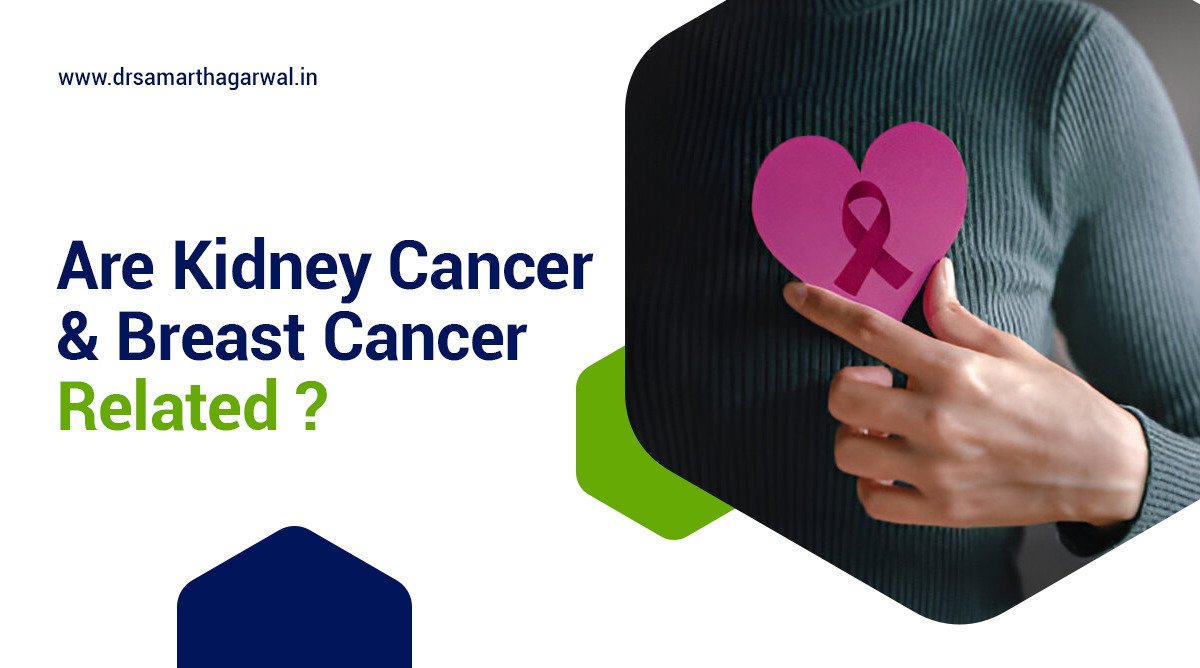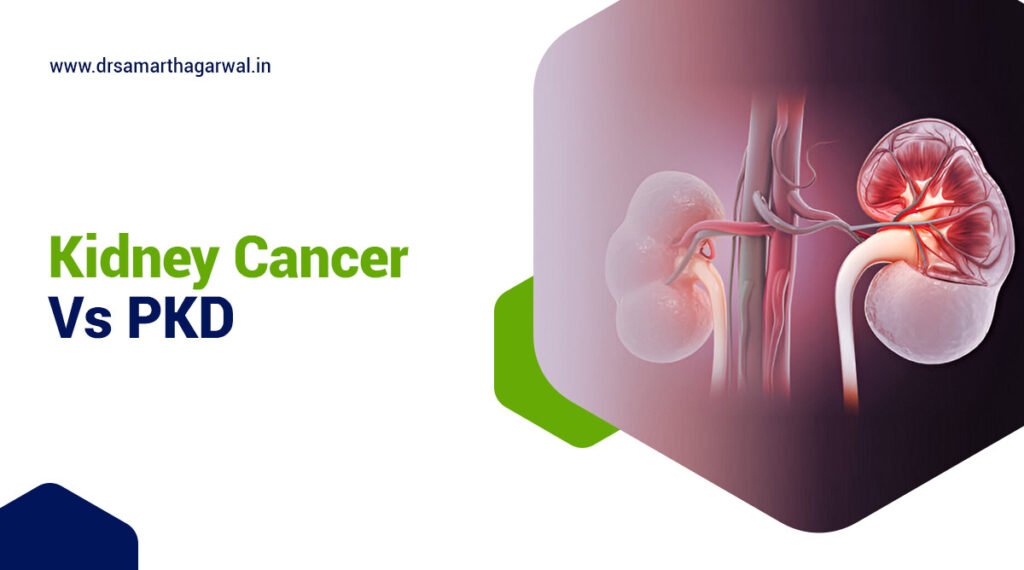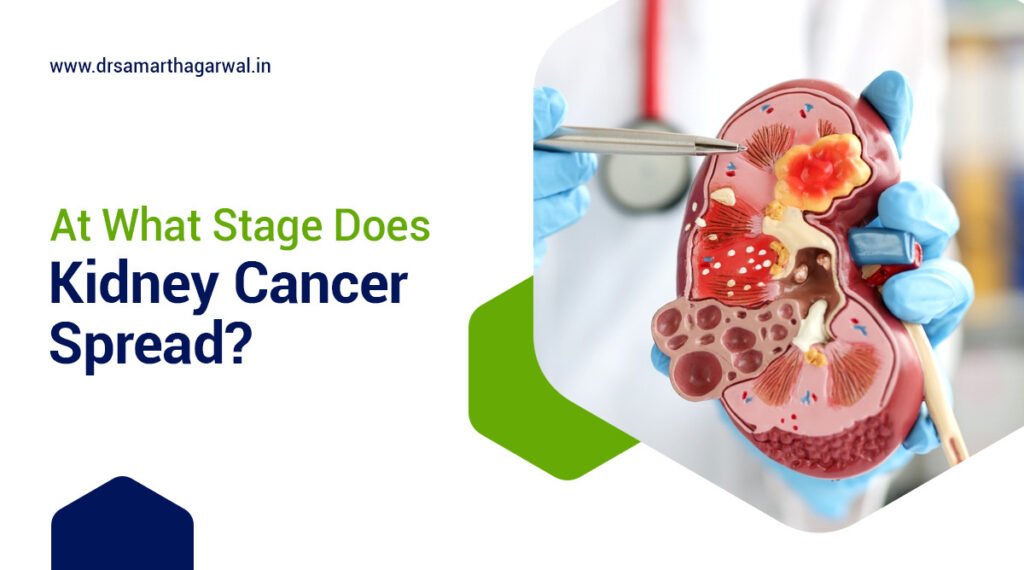Kidney and breast cancer represent two of the most prevalent malignancies affecting millions globally. An in-depth understanding of these cancers, including their associated risk factors, symptoms, and treatment options, is essential for facilitating early detection and effective management. This article examines the relationship between kidney and breast cancer, including the potential for dual malignancies, as articulated by Dr. Samarth Agarwal, a urologist based in Siliguri. It addresses the impact of these diseases on individuals, highlights the commonalities in their risk factors, such as genetic predispositions and lifestyle choices, and discusses potential lifestyle modifications that may help reduce the risk. We invite readers to engage with us as we explore the complexities surrounding these two significant health challenges.
What is Kidney Cancer?
Kidney cancer primarily refers to renal cell carcinoma, which originates in the lining of the kidney’s tubules, comprising about 90% of kidney cancer cases. It often requires comprehensive diagnostic imaging and clinical evaluation for effective oncological care.
Clear cell carcinoma, a subtype of renal cell carcinoma, is characterized by distinct histopathological features and is known for its aggressive nature. This type of malignancy is often diagnosed during routine medical examinations or imaging tests, such as ultrasound examination or CT scans, making early detection crucial for successful treatment outcomes.
What is Breast Cancer?
Breast cancer is a multifaceted disease characterized by the uncontrolled growth of breast cells, often manifesting as breast masses, bilateral breast symptoms, or changes in breast parenchyma. It can present with atypical features that may be detected through mammogram findings, emphasizing the need for regular breast imaging and clinical evaluation.
Understanding the risk factors associated with breast cancer, including genetic predispositions, mammographic density, and lifestyle choices, plays a pivotal role in early detection and effective oncological care.
Are Kidney Cancer and Breast Cancer Related?
Understanding the relationship between kidney cancer and breast cancer is critical, as research indicates that patients can present with dual malignancy or synchronous cancers, where both cancer types are diagnosed concurrently or sequentially.
This phenomenon, known as synchronous cancers, highlights the necessity of comprehensive diagnostic workups, including histopathological assessment, and interdisciplinary patient management strategies. Furthermore, cases of breast cancer metastasizing to the kidneys, although rare, underscore the importance of thorough surveillance and multi-cancer detection methods in oncology.
What are the Risk Factors for Developing Both Cancers?
Identifying the risk factors for developing both kidney cancer and breast cancer is crucial for early intervention and prevention strategies.
Factors such as age, family history, and lifestyle choices, including diet and exercise, can significantly influence an individual’s likelihood of developing these cancer types. Understanding the tumor characteristics can further aid in assessing risk.
Understanding the cancer stages, radiological characteristics, and their implications in the context of patient history can help in tailoring effective treatment and management plans.
Several lifestyle changes can play a pivotal role in mitigating these risks. For instance, maintaining a healthy weight, engaging in regular physical activity, and adopting a balanced diet rich in fruits, vegetables, and whole grains are essential.
Reducing the intake of processed foods and red meats has also been linked to lower cancer risk. Regular screenings, such as mammography, and self-examinations are critical for early detection, especially in individuals with a family history of these diseases.
The stage of cancer significantly impacts prognosis and treatment decisions; for example, early-stage kidney and breast cancers typically have a higher survival rate and more treatment options available.
Patient education about these stages, including understanding treatment pathways and the importance of adhering to recommended interventions, give the power tos individuals to take an active role in their health journey.
Fostering awareness about both the risk factors and the importance of continuous education can aid in better health outcomes.
How Can Kidney Cancer and Breast Cancer be Diagnosed?
The diagnosis of kidney cancer and breast cancer relies heavily on advanced diagnostic imaging techniques, such as the Breast Imaging Reporting and Data System, and clinical evaluation, which play a pivotal role in identifying malignancies at an early stage.
Methods such as ultrasound examination, MRI, and mammography system are essential for accurate imaging assessment, while histopathological diagnosis through biopsy provides definitive confirmation of neoplastic growth in tissues.
A thorough clinical examination, along with a detailed patient history and immunohistochemistry analysis, further enhances the effectiveness of the diagnostic workup.
What are the Common Symptoms of Kidney Cancer and Breast Cancer?
Common symptoms of kidney cancer and breast cancer can vary, but vigilance for atypical features is essential for timely diagnosis. Early recognition of these signs plays a crucial role in initiating appropriate preventive measures and treatments that can significantly influence patient outcomes. Kidney cancer may present with symptoms such as hematuria, pain in the flank area, and potential lymph node involvement, while breast cancer can manifest as a noticeable lump, bilateral breast changes, alterations in breast discharge, or other alterations in breast appearance. Recognizing these symptoms can lead to prompt medical evaluation, malignancy diagnosis, and effective oncological care.
Understanding the overlapping symptoms is vital, as both cancers may present vague symptoms like fatigue and unexplained weight loss. Some patients may be unaware that these subtle indicators could signify more serious conditions.
The significance of early symptom recognition cannot be overstated, as it directly impacts the effectiveness of treatment plans and patient survival rates.
- For kidney cancer: Pay attention to persistent abdominal pain, swelling, or unexplained fever.
- For breast cancer: Look out for skin changes such as dimpling or puckering, which might be easily dismissed.
By prioritizing awareness of these diverse symptoms, individuals can facilitate quicker diagnoses, leading to earlier interventions and comprehensive care strategies in their treatment journeys.
What are the Screening Tests for Kidney Cancer and Breast Cancer?
Screening tests play a vital role in the early detection of kidney cancer and breast cancer, allowing for timely intervention that can significantly improve patient outcomes. For breast cancer, mammography is the gold standard screening tool, while ultrasound examination is often utilized for further assessment in high-risk individuals. In the case of kidney cancer, imaging assessments such as CT scans and MRIs are critical for identifying renal masses and determining their characteristics.
These essential tests not only help in spotting abnormalities at an early stage but also facilitate a deeper understanding of the disease’s progression and aid in creating an effective treatment plan.
For breast cancer, health professionals recommend women aged 40 and over to undergo a mammogram annually, while those with a family history may need to start earlier. Similarly, kidney cancer screening mostly involves imaging tests for those at higher risk, such as individuals with a history of kidney disease or smoking, with evaluations often recommended every few years.
- The effectiveness of these screening tests, including multi-cancer early detection methods is well-documented, demonstrating a reduction in mortality rates when cancer is detected early.
- These tests provide more options for treatment, allowing healthcare providers to tailor a patient’s care effectively.
Ultimately, the importance of early detection cannot be overstated, as it is directly linked to increased survival rates and better overall prognoses.
What are the Treatment Options for Kidney Cancer and Breast Cancer?
The treatment options for kidney cancer and breast cancer encompass a wide array of medical, surgical, and supportive therapies, tailored to the individual needs of patients.
Surgical oncology is often the first line of treatment, with nephrectomy and partial nephrectomy being prevalent for kidney cancer, while lumpectomy or mastectomy may be employed for breast cancer.
Additionally, advancements in immunotherapy, such as GATA3 and PAX9 targeting, and chemotherapy have transformed the landscape of cancer treatment, offering promising avenues for managing both malignancies.
What are the Surgical Procedures for Treating Kidney Cancer and Breast Cancer?
Surgical procedures are fundamental components in the treatment of kidney cancer and breast cancer, with nephrectomy and partial nephrectomy being common for renal tumors. For breast cancer, surgical options include mastectomy and lumpectomy, which are determined by the tumor’s size, location, and patient preferences. These surgical techniques necessitate careful consideration of oncological principles, case presentations, and patient management to ensure optimal outcomes.
The choice of surgical intervention, guided by histopathology reports and tumor characteristics, plays a crucial role in shaping the overall treatment strategy. Each option comes with distinct considerations, including:
- indications: The selection often depends on tumor staging and patient health.
- benefits: Effective surgery can lead to significant tumor reduction.
- risks: Potential complications should be thoroughly discussed.
These procedures may be complemented by adjuvant therapies, such as chemotherapy or radiation, often assessed through Breast Imaging Reporting and Data System (BI-RADS) guidelines, emphasizing the need for a multidisciplinary approach. By integrating surgery with other treatment modalities, healthcare providers aim to enhance prognosis and improve the quality of life for those affected.
What are the Chemotherapy and Radiation Therapy Options for Kidney Cancer and Breast Cancer?
Chemotherapy and radiation therapy are critical adjuncts in the treatment of kidney and breast cancers, particularly for patients with advanced disease, bilateral breast metastasis, or high-risk features. While chemotherapy can be employed to target systemic disease, radiation therapy may be utilized for palliation or as an adjunct to surgical procedures, depending on the treatment plan. Effective patient management and oncological care are essential to navigate the complexities of these therapies.
These approaches play a pivotal role in the overall treatment strategy, particularly when the goal is to achieve maximal therapeutic benefit while minimizing potential side effects.
Understanding the specific protocols for each therapy type is crucial—chemotherapy regimens often involve cycles of medication tailored to the individual’s needs, such as the consideration of PAX9 and GATA3 markers, while radiation therapy can range from localized treatment to whole-body applications based on cancer staging.
Potential side effects such as nausea and fatigue from chemotherapy or skin irritation from radiation should be carefully monitored and managed to enhance:
- patient comfort
- adherence to treatment plans
Integrating these therapies effectively, as often highlighted in a case report, not only helps in targeting the malignancy but also aims to preserve or improve the patient’s quality of life during challenging times.
Can Kidney Cancer, Including Renal Cell Carcinoma, and Breast Cancer be Prevented?
While not all kidney and breast cancer cases can be prevented, adopting certain lifestyle changes can significantly reduce the risk factors associated with these malignancies.
Emphasizing early detection through regular screenings, including mammographic density assessments and awareness of personal and family health history, is essential for effective cancer prevention.
Additionally, patient education about modifiable risk factors, such as diet and exercise, along with information from the study population, can give the power to individuals to take proactive measures in their cancer prevention strategies.
What are the Lifestyle Changes that can Help Lower the Risk of Developing Both Cancers?
Implementing lifestyle changes is a key strategy in lowering the risk of developing kidney cancer and breast cancer, as numerous studies, including those from the Egyptian Journal of Radiology, support the connection between healthy living and cancer prevention. Eating a balanced diet rich in fruits and vegetables, maintaining a healthy weight, and engaging in regular physical activity are essential components that can positively influence overall health. Reducing alcohol consumption and avoiding tobacco products also play vital roles in minimizing risk factors associated with these malignancies.
Making informed choices can further enhance protective measures against cancer. For instance, adopting a plant-based diet not only aids in achieving optimal weight but also ensures exposure to beneficial antioxidants. Likewise, incorporating activities such as brisk walking, cycling, or even yoga into a daily routine helps maintain both physical and mental well-being.
- Focus on whole foods: Select natural, minimally processed options over refined products to improve nutrient intake.
- Stay hydrated: Drinking plenty of water can help flush out potential toxins from the body.
- Avoid sun exposure: Utilizing sunscreen and protective clothing can significantly reduce skin cancer risks.
Insights from Egypt and other regions further emphasize these preventive measures.
Comprehensive patient education is paramount in guiding individuals to understand these factors, fostering an environment ripe for healthier choices and ultimately reducing cancer risk.
Who is at Risk for Developing Both Kidney Cancer and Breast Cancer, Including Multiple Malignancies?
While anyone can develop kidney cancer or breast cancer, women with a family history of breast cancer, as well as those who have a genetic mutation called BRCA1 or BRCA2, are at a higher risk for both types of cancer.
Can Breast Cancer Treatment, Such as Radiation Therapy, Increase the Risk of Kidney Cancer?
Yes, certain breast cancer treatments, such as radiation therapy, can increase the risk of developing kidney cancer. This is why it is important for breast cancer patients to undergo regular screenings for kidney cancer.
Is There Anything I Can Do to Lower My Risk of Developing Kidney Cancer and Breast Cancer, Including Metastatic Disease?
Maintaining a healthy lifestyle, including regular exercise, a balanced diet, and avoiding tobacco and excessive alcohol consumption, can help lower your risk of developing both kidney cancer and breast cancer.
What Should I Do if I Have Been Diagnosed with Both Kidney Cancer and Breast Cancer, According to Experts like Crystal Fancher and Ramkishen Narayanan?
In this case, it is important to work closely with your healthcare team to develop a treatment plan that addresses both types of cancer. This may involve multiple specialists and a personalized approach to your care.

Contact Dr. Samarth Agarwal if you have any questions or concerns about your Urinary health!







